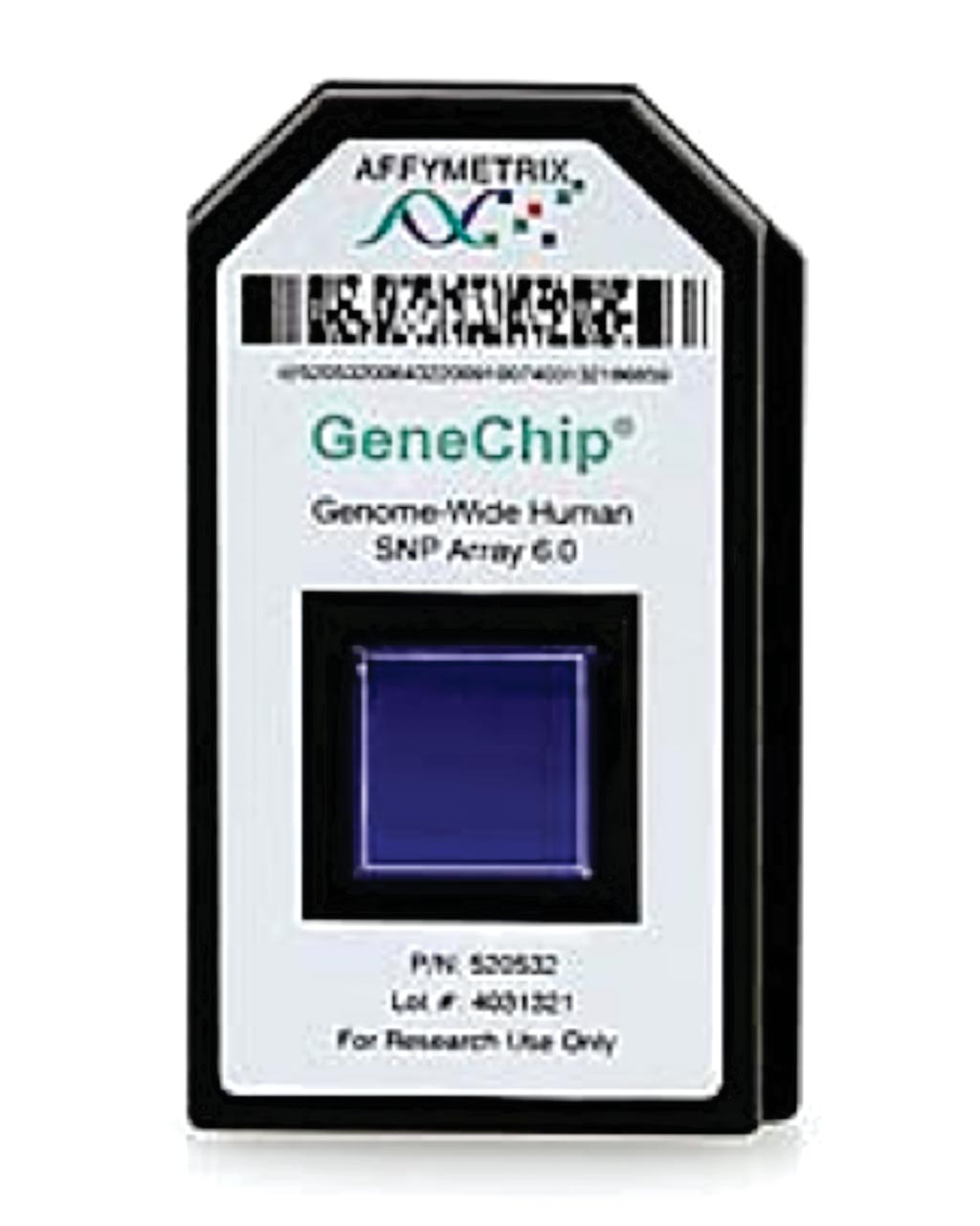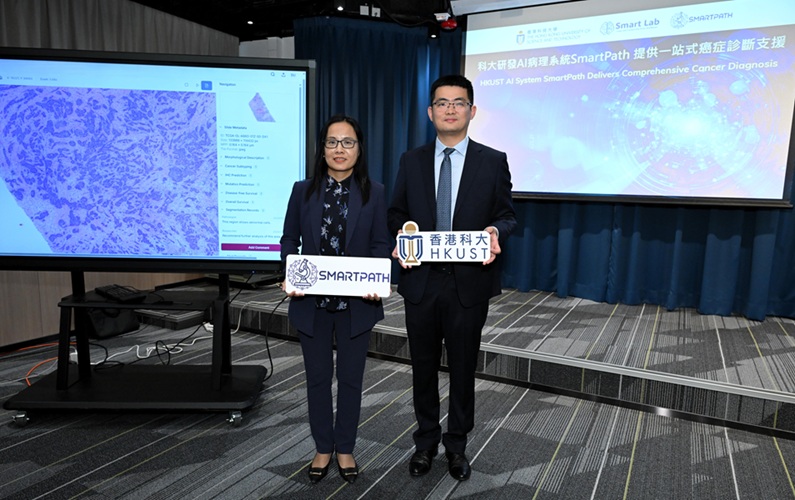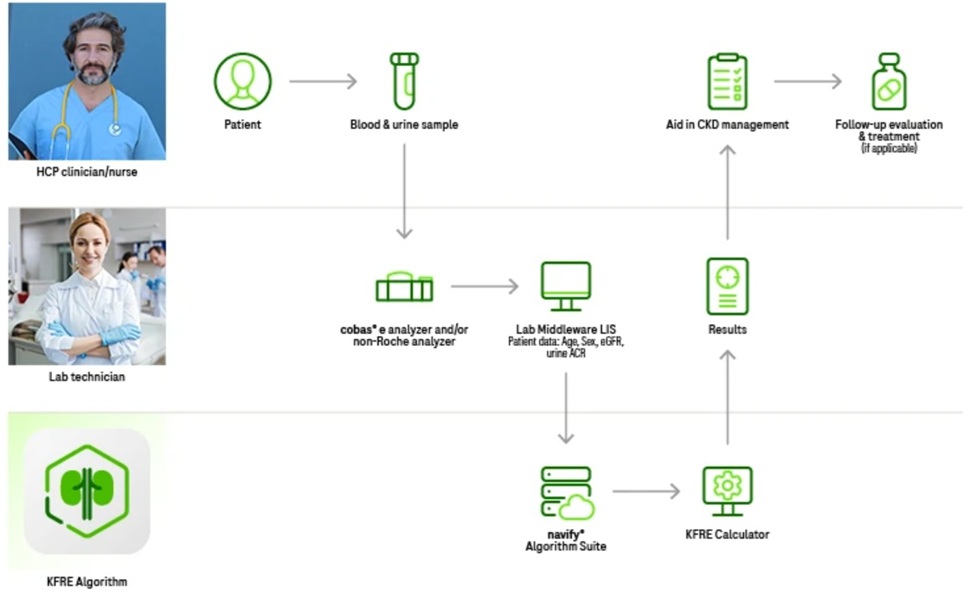Type 2 Diabetes Misdiagnosed in African Americans
|
By LabMedica International staff writers Posted on 27 Sep 2017 |

Image: The Affymetrix Genome-Wide Human SNP Array 6.0 features 1.8 million genetic markers including more than 906,600 single nucleotide polymorphisms (SNPs) and more than 946,000 probes for the detection of copy number variation (Photo courtesy of Thermo Fisher Scientific).
Glycated hemoglobin (HbA1c) is used to diagnose type 2 diabetes (T2D) and assess glycemic control in patients with diabetes. Previous genome-wide association studies (GWAS) have identified 18 HbA1c-associated genetic variants.
One genetic variant in particular, found only in African Americans, significantly reduces the accuracy of the HbA1c blood test used to diagnose and monitor the condition. This means around 650,000 African Americans in the USA could have undiagnosed type 2 diabetes if tested with the HbA1c test alone.
A large team of 200 international scientists led by those at the Welcome Trust Sanger Institute (Hinxton, Cambridge, UK) used genome-wide association meta-analyses in up to 159,940 individuals from 82 cohorts of European, African, East Asian, and South Asian ancestry. They identified 60 common genetic variants associated with HbA1c. They classified variants as implicated in glycemic, erythrocytic, or unclassified biology and tested whether additive genetic scores of erythrocytic variants (GS-E) or glycemic variants (GS-G) were associated with higher T2D incidence in multiethnic longitudinal cohorts.
Each cohort was genotyped on commercially available genome-wide arrays, for instance, the Affymetrix Genome-Wide Human SNP Assay 6.0 or the Illumina Human610-Quad BeadChip) or the Illumina CardioMetabochip (Metabochip). Where possible, studies reported HbA1c as a National Glycohemoglobin Standardization Program (NGSP) percent. All participants were free of diabetes defined by physician diagnosis, medication use, or fasting glucose (FG) ≥ 7 mmol/L. A small number of cohorts also removed individuals with two hour glucose (2hrGlu) ≥ 11.1 mmol/L, or HbA1c ≥ 6.5%.
The teams found that 19 glycemic and 22 erythrocytic variants were associated with HbA1c at genome-wide significance. GS-G was associated with higher T2D risk, whereas GS-E was not. In Europeans and Asians, erythrocytic variants in aggregate had only modest effects on the diagnostic accuracy of HbA1c. Yet, in African Americans, the X-linked Glucose-6-phosphate dehydrogenase (G6PD) G202A variant (T-allele frequency 11%) was associated with an absolute decrease in HbA1c of 0.81%-units per allele in hemizygous men, and 0.68%-units in homozygous women.
Inés Barroso, PhD, a principal investigator and a senior author of the study said, “The issue with the G6PD genetic variant is it artificially lowers the value of blood sugar in the HbA1c test, and can lead to under-diagnosis of people with type 2 diabetes. We estimate that if we tested all Americans for diabetes using the HbA1c test, we would miss type 2 diabetes in around 650,000 African Americans. However, the HbA1c test remains a suitable test for diagnosing and monitoring diabetes for the majority of people.” The study was published on September 12, 2017, in the journal Public Library of Science Medicine.
Related Links:
Welcome Trust Sanger Institute
One genetic variant in particular, found only in African Americans, significantly reduces the accuracy of the HbA1c blood test used to diagnose and monitor the condition. This means around 650,000 African Americans in the USA could have undiagnosed type 2 diabetes if tested with the HbA1c test alone.
A large team of 200 international scientists led by those at the Welcome Trust Sanger Institute (Hinxton, Cambridge, UK) used genome-wide association meta-analyses in up to 159,940 individuals from 82 cohorts of European, African, East Asian, and South Asian ancestry. They identified 60 common genetic variants associated with HbA1c. They classified variants as implicated in glycemic, erythrocytic, or unclassified biology and tested whether additive genetic scores of erythrocytic variants (GS-E) or glycemic variants (GS-G) were associated with higher T2D incidence in multiethnic longitudinal cohorts.
Each cohort was genotyped on commercially available genome-wide arrays, for instance, the Affymetrix Genome-Wide Human SNP Assay 6.0 or the Illumina Human610-Quad BeadChip) or the Illumina CardioMetabochip (Metabochip). Where possible, studies reported HbA1c as a National Glycohemoglobin Standardization Program (NGSP) percent. All participants were free of diabetes defined by physician diagnosis, medication use, or fasting glucose (FG) ≥ 7 mmol/L. A small number of cohorts also removed individuals with two hour glucose (2hrGlu) ≥ 11.1 mmol/L, or HbA1c ≥ 6.5%.
The teams found that 19 glycemic and 22 erythrocytic variants were associated with HbA1c at genome-wide significance. GS-G was associated with higher T2D risk, whereas GS-E was not. In Europeans and Asians, erythrocytic variants in aggregate had only modest effects on the diagnostic accuracy of HbA1c. Yet, in African Americans, the X-linked Glucose-6-phosphate dehydrogenase (G6PD) G202A variant (T-allele frequency 11%) was associated with an absolute decrease in HbA1c of 0.81%-units per allele in hemizygous men, and 0.68%-units in homozygous women.
Inés Barroso, PhD, a principal investigator and a senior author of the study said, “The issue with the G6PD genetic variant is it artificially lowers the value of blood sugar in the HbA1c test, and can lead to under-diagnosis of people with type 2 diabetes. We estimate that if we tested all Americans for diabetes using the HbA1c test, we would miss type 2 diabetes in around 650,000 African Americans. However, the HbA1c test remains a suitable test for diagnosing and monitoring diabetes for the majority of people.” The study was published on September 12, 2017, in the journal Public Library of Science Medicine.
Related Links:
Welcome Trust Sanger Institute
Latest Molecular Diagnostics News
- Genomic Test Could Reduce Lymph Node Biopsy Surgery in Melanoma Patients
- Urine Test Could Replace Painful Kidney Biopsies for Lupus Patients
- Blood Test Guides Post-Surgical Immunotherapy for Muscle-Invasive Bladder Cancer
- Mitochondrial DNA Mutations from Kidney Stressors Could Predict Future Organ Decline
- Blood Test Could Predict Bariatric Surgery Outcomes in Teenagers
- ctDNA Blood Test to Help Personalize Postsurgical Colon Cancer Treatment
- AI Powered Blood Test Predicts Suicide Risk in Bipolar Patients
- DNA Sensor Enables Molecular Detection from Single Blood Drop
- DNA-Powered Test Accurately Detects E. Coli Lookalike Bacteria
- World’s Fastest DNA Sequencing Technique to Revolutionize NICU Genomic Care
- Blood Test Uses Cell-Free DNA to Detect ALS Faster and More Accurately
- Multi-Cancer Early Detection Blood Test Increases Cancer Detection
- Portable Label-Free Device Tracks Alzheimer's Disease in Real Time
- Liquid Biopsy Test Enables Early Detection of ICI-Related Myocarditis
- Rapid POC Diagnostic Test Detects Asymptomatic Malaria Cases
- Improved DNA Sequencing Tool Uncovers Hidden Mutations Driving Cancer
Channels
Clinical Chemistry
view channel
VOCs Show Promise for Early Multi-Cancer Detection
Early cancer detection is critical to improving survival rates, but most current screening methods focus on individual cancer types and often involve invasive procedures. This makes it difficult to identify... Read more
Portable Raman Spectroscopy Offers Cost-Effective Kidney Disease Diagnosis at POC
Kidney disease is typically diagnosed through blood or urine tests, often when patients present with symptoms such as blood in urine, shortness of breath, or weight loss. While these tests are common,... Read moreHematology
view channel
Viscoelastic Testing Could Improve Treatment of Maternal Hemorrhage
Postpartum hemorrhage, severe bleeding after childbirth, remains one of the leading causes of maternal mortality worldwide, yet many of these deaths are preventable. Standard care can be hindered by delays... Read more
Pioneering Model Measures Radiation Exposure in Blood for Precise Cancer Treatments
Scientists have long focused on protecting organs near tumors during radiotherapy, but blood — a vital, circulating tissue — has largely been excluded from dose calculations. Each blood cell passing through... Read more
Platelets Could Improve Early and Minimally Invasive Detection of Cancer
Platelets are widely recognized for their role in blood clotting and scab formation, but they also play a crucial role in immune defense by detecting pathogens and recruiting immune cells.... Read more
Portable and Disposable Device Obtains Platelet-Rich Plasma Without Complex Equipment
Platelet-rich plasma (PRP) plays a crucial role in regenerative medicine due to its ability to accelerate healing and repair tissue. However, obtaining PRP traditionally requires expensive centrifugation... Read moreImmunology
view channel
Blood-Based Liquid Biopsy Model Analyzes Immunotherapy Effectiveness
Immunotherapy has revolutionized cancer care by harnessing the immune system to fight tumors, yet predicting who will benefit remains a major challenge. Many patients undergo costly and taxing treatment... Read more
Signature Genes Predict T-Cell Expansion in Cancer Immunotherapy
Modern cancer immunotherapies rely on the ability of CD8⁺ T cells to rapidly multiply within tumors, generating the immune force needed to eliminate cancer cells. However, the biological triggers behind... Read moreMicrobiology
view channel
Fast Noninvasive Bedside Test Uses Sugar Fingerprint to Detect Fungal Infections
Candida bloodstream infections are a growing global health threat, causing an estimated 6 million cases and 3.8 million deaths annually. Hospitals are particularly vulnerable, as weakened patients after... Read more
Rapid Sepsis Diagnostic Device to Enable Personalized Critical Care for ICU Patients
Sepsis is a life-threatening condition that occurs when the body’s response to infection spirals out of control, damaging organs and leading to critical illness. Patients often arrive at intensive care... Read morePathology
view channel
Tears Offer Noninvasive Alternative for Diagnosing Neurodegenerative Diseases
Diagnosing and monitoring eye and neurodegenerative diseases often requires invasive procedures to access ocular fluids. Ocular fluids like aqueous humor and vitreous humor contain valuable molecular information... Read more
AI-Powered Method Combines Blood Data to Accurately Measure Biological Age
Chronological age tells us how many years we’ve lived, but not how quickly our bodies are ageing. Some people stay healthy well into their 80s or 90s, while others experience decline much earlier.... Read moreTechnology
view channel
Embedded GPU Platform Enables Rapid Blood Profiling for POC Diagnostics
Blood tests remain a cornerstone of medical diagnostics, but traditional imaging and analysis methods can be slow, costly, and reliant on dyes or contrast agents. Now, scientists have developed a real-time,... Read more
Viral Biosensor Test Simultaneously Detects Hepatitis and HIV
Globally, over 300 million people live with Hepatitis B and C, and 40 million with HIV, according to WHO estimates. Diagnosing bloodborne viruses such as HIV and Hepatitis B and C remains challenging in... Read moreIndustry
view channel
Advanced Instruments Merged Under Nova Biomedical Name
Advanced Instruments (Norwood, MA, USA) and Nova Biomedical (Waltham, MA, USA) are now officially doing business under a single, unified brand. This transformation is expected to deliver greater value... Read more





















